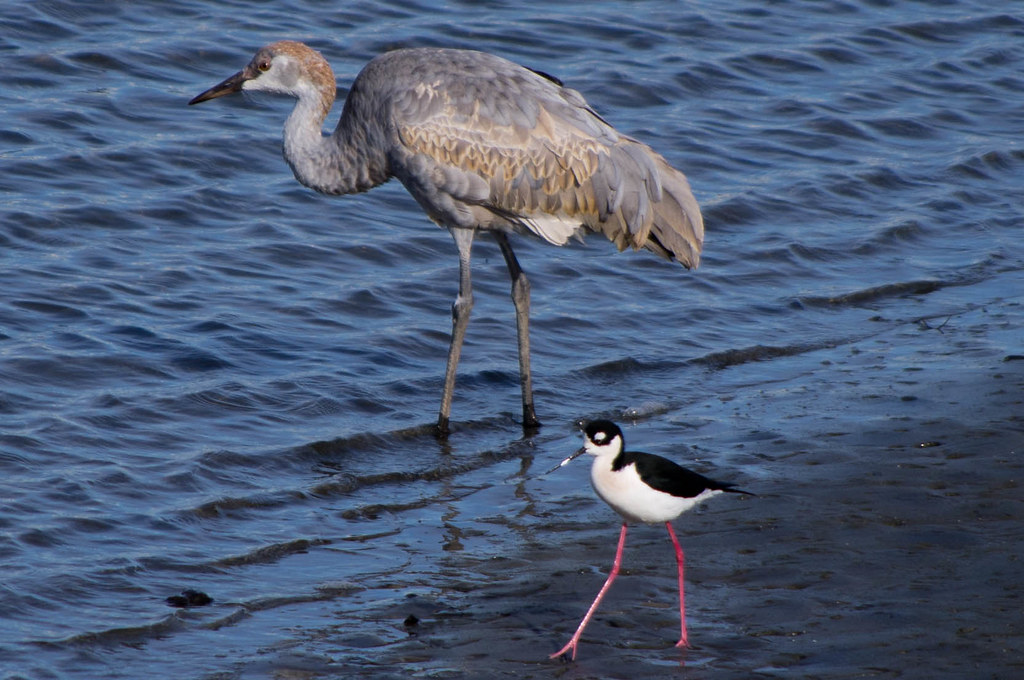Context:
The Wildlife Institute of India and the Zoological Survey of India recently conducted an assessment of the population of black-necked cranes.
Key points:
- As per a survey conducted by the Wildlife Institute of India in 2016-17 in the Ladakh region, the population size of the black-necked crane was around 66-69 individuals.
- In Arunachal Pradesh, a small population of approximately 11 cranes arrives during the winter months.
About Black-Necked Cranes (ADD DIAGRAM)
Appearance: They have a distinctive black neck and head, with a contrasting white body, red crown patch, and black tail feathers.
- They stand around 55-59 inches tall with a wingspan of 90-96 inches.

Habitat: They are primarily found in high-altitude regions of Central Asia. Specifically, its range includes parts of India, Bhutan, China, and Tibet.
- In India, they are commonly observed in regions such as Ladakh in Jammu & Kashmir, as well as Arunachal Pradesh.
- These birds inhabit alpine meadows, wetlands, and river valleys at elevations ranging from 8,000 to 15,000 feet above sea level. They breed in marshy areas and nest on the ground.
- Migration: Seasonal migration between breeding and wintering grounds, observed in regions like Ladakh and Arunachal Pradesh in India during winter.
- Cultural Significance: The people in Sangti, Zemithang, and Chug are mostly Monpas, who follow Tibetan Buddhism, which considers the black-necked crane as an embodiment of the sixth Dalai Lama. Thus, they revere the bird.
- Feeding Habits: Primarily herbivorous, feeding on roots, tubers, grains, and insects in wetland habitats, foraging in shallow water and marshes.
Threats:
- Loss of habitat is occurring due to development projects taking place on the wetlands.
- ‘Feral (domestic) dogs’ cause damage to their eggs and chicks.
- Increasing grazing pressure on the limited pastures near the wetlands.
Measures to Protect the Black-necked Crane:
Conservation Status:
- IUCN status: Near Threatened
- Listed in Schedule I of the Wild Life (Protection) Act, 1972.
- Listed in Appendix I of CITES and the Convention on Conservation of Migratory Species (CMS).
Habitat Conservation:
- Important habitats designated as Protected Areas, e.g., Changthang Sanctuary, Ladakh.
- Tso Kar Wetlands Complex designated as a Ramsar Site.
Policy Framework:
- National Wildlife Action Plan (2017-2031) includes specific chapters and actions for wildlife conservation.
- Financial assistance provided to States/Union Territories under the ‘Development of Wildlife Habitats’ scheme.
- Guidelines issued under Section 33 of the Wild Life (Protection) Act, 1972, for management planning of the Protected Area.

